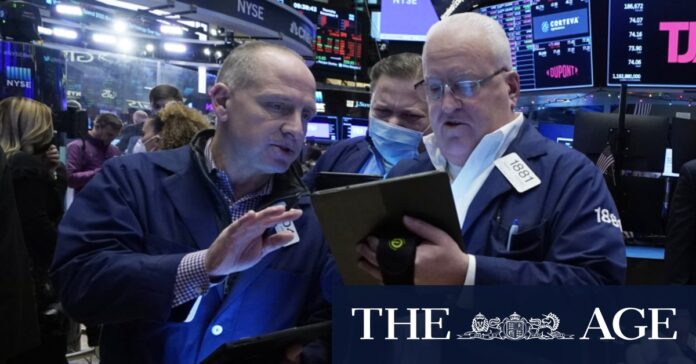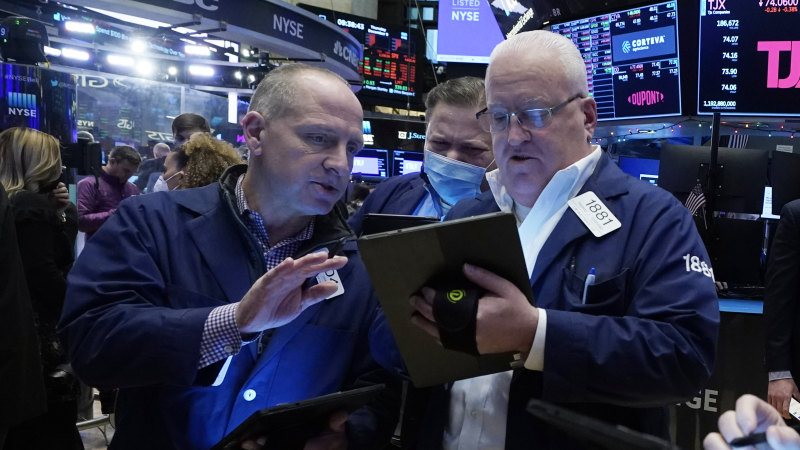[ad_1]
Treasury yields have already relaxed significantly on expectations for rate cuts, and that helped the stock market’s rally accelerate sharply in November. The yield on the 10-year Treasury slipped Friday to 4.13 per cent, and it’s down sharply from the 5 per cent that it reached in October, which was its highest level since 2007.
Of course, some critics say Wall Street has gotten ahead of itself, again, in predicting how soon the Federal Reserve may begin cutting interest rates.
“The market is addicted to rate cuts,” said Rich Weiss, chief investment officer of multi-asset strategies at American Century Investments. “They just can’t get enough of it and are myopically focused on it.”
Repeatedly since the Fed began this rate-hiking campaign early in 2022, traders have been quick to forecast an approaching easing of rates, only to be disappointed as high inflation proved to be more stubborn than expected. If that happens again, the big moves higher for stocks and lower for bond yields may need to revert.
This time around, though, the Fed itself has hinted that rate cuts are coming, though some officials have indicated they may begin later than the market is hoping for. Traders are betting on a nearly coin flip’s chance that the Fed will start cutting in March, according to data from CME Group.
“The truth is likely somewhere between what the Fed is saying and what the market is expecting,” said Brian Jacobsen, chief economist at Annex Wealth Management. “That will continue to cause dips and rips” for financial markets “until the two reconcile with each other.”
Perhaps more importantly for the Fed, expectations for upcoming inflation among households also seem to be anchored. A big worry has been that such expectations could take off and trigger a vicious cycle that keeps inflation high.
Loading
Last year, a select few Big Tech companies were responsible for the wide majority of the S&P 500’s gains. Seven of them accounted for 62 per cent of the index’s total return, according to S&P Dow Jones Indices.
Many of those stocks — Microsoft, Apple, Alphabet, Nvidia, Amazon, Meta Platforms and Tesla — rode a furor in the market around technology related to artificial intelligence. The hope is AI will lead to a boom in profits, both for companies using it and for companies providing the hardware for it.
Investors may have wished they had stayed in just those stocks, which got the nickname of “the Magnificent 7.” But some of them remain below their record highs, such as Tesla. It’s still down 48 per cent from its all-time high set in November 2021.
Friday’s return of the S&P 500 to a record serves as another example that investors who stay patient and spread their investments across the US stock market end up making back all their losses. Sometimes it can take a long time, like the lost decade of 2000 through 2009 when the S&P 500 tumbled through the dot-com bubble bust and the global financial crisis. But the market has historically made investors whole again, given enough time.
Including dividends, investors with S&P 500 index funds already returned to break-even a month ago.
Of course, risks still remain for investors. Besides uncertainty about when the Fed will begin cutting interest rates, it’s also still not a sure thing that the economy will avoid a recession.
Hikes to interest rates take a notoriously long time to make their way fully through the system, and they can cause things to break in unexpected places within the financial system.
[ad_2]
Source link



